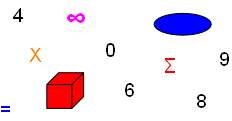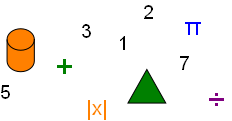



Multiplying and Dividing Radical Expressions


Radical Expressions are math operations having multiple terms.
Radical Multiplication
√2(√18 + √6) = √36 + √12 = √( 6 × 6) + √(2 × 2 × 3) = 6 + 2√3
The FOIL Method (First-Outer-Inner-Last):
(2 + √3) (4 − 3√3) =
F = 2 × 4 = +8
O = 2 × (−3√3) = −6√3
I = √3 × 4 = 4√3
L = √3 × (−3√3) = −3 × 3 = −9
8 − 6√3 + 4√3 − 9 = −1− 2√3
Radical Multiplication Math Example:
x2 + 8x + 13 when x = −4 + √3
(First, substitute “x” with −4 + √3)
(−4 + √3) 2 + 8(−4 + √3) + 13 =
(Next, remove square from expression)
[(−4 + √ 3) (−4 + √3)] + (−32 + 8√3 ) + 13 =
[ 16 − 4√3 − 4√3 + 3 ] − 32 + 8√3 + 13 = 16 − 8√3 + 3 − 32 + 8√3 + 13 =
16 + 3 − 32 + 13 − 8√3 + 8√3 = 0
Radicals Division by Rationalizing Denominators
Radical denominators having two or more terms:
(4 + 2√5 ) / (5 − √5)
First, remove Radicals from denominator using the conjugate 5 + √5
(4 + 2√5) (5 + √5) ÷ (5 − √5) (5 + √5) =
(20 + 4√5 + 10√5 + 10) ÷ (25 + 5√5 − 5√5 − 5) =
30 + 14√5 ÷ 20 = (15 + 7√5) / 10
Radical denominators that divide all terms of numerator:
(√32 + √24 − 3√6) ÷ √2 =
First, divide all terms by denominator √2 to remove radical from denominator.
[(√32 + √24 − 3√6) / √2] ÷ [√2 / √2] =
(√16 + √12 − 3√3) / 1 =
4 + 2√3 − 3√3 =
4 − √3
Copyright © DigitMath.com
All Rights Reserved.